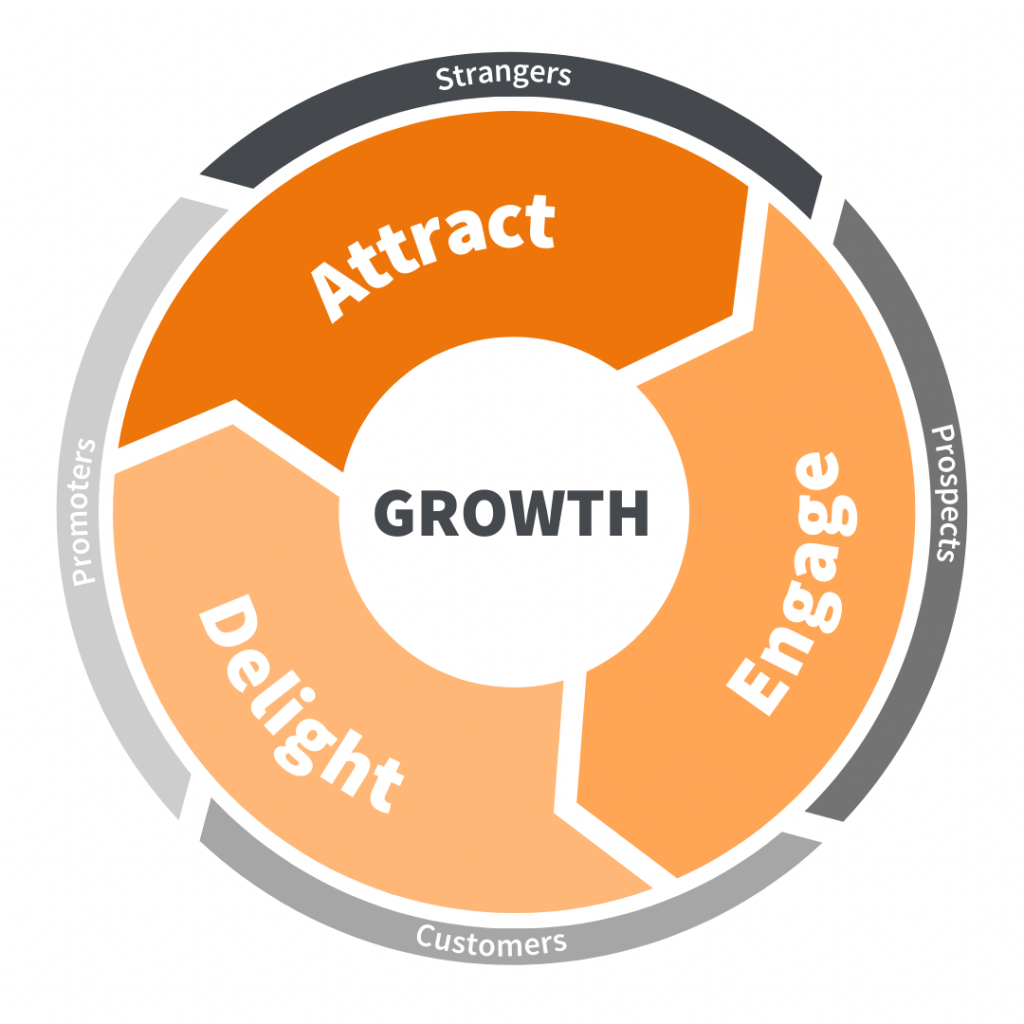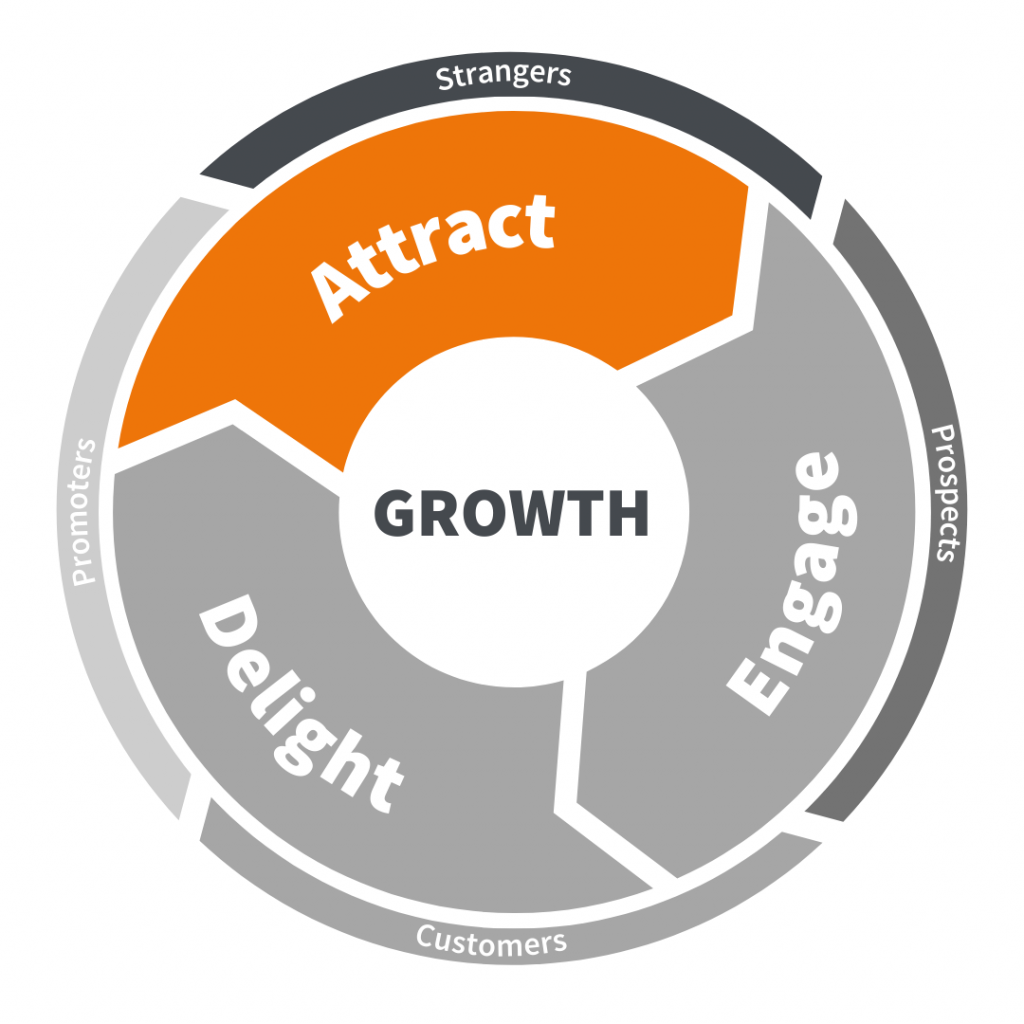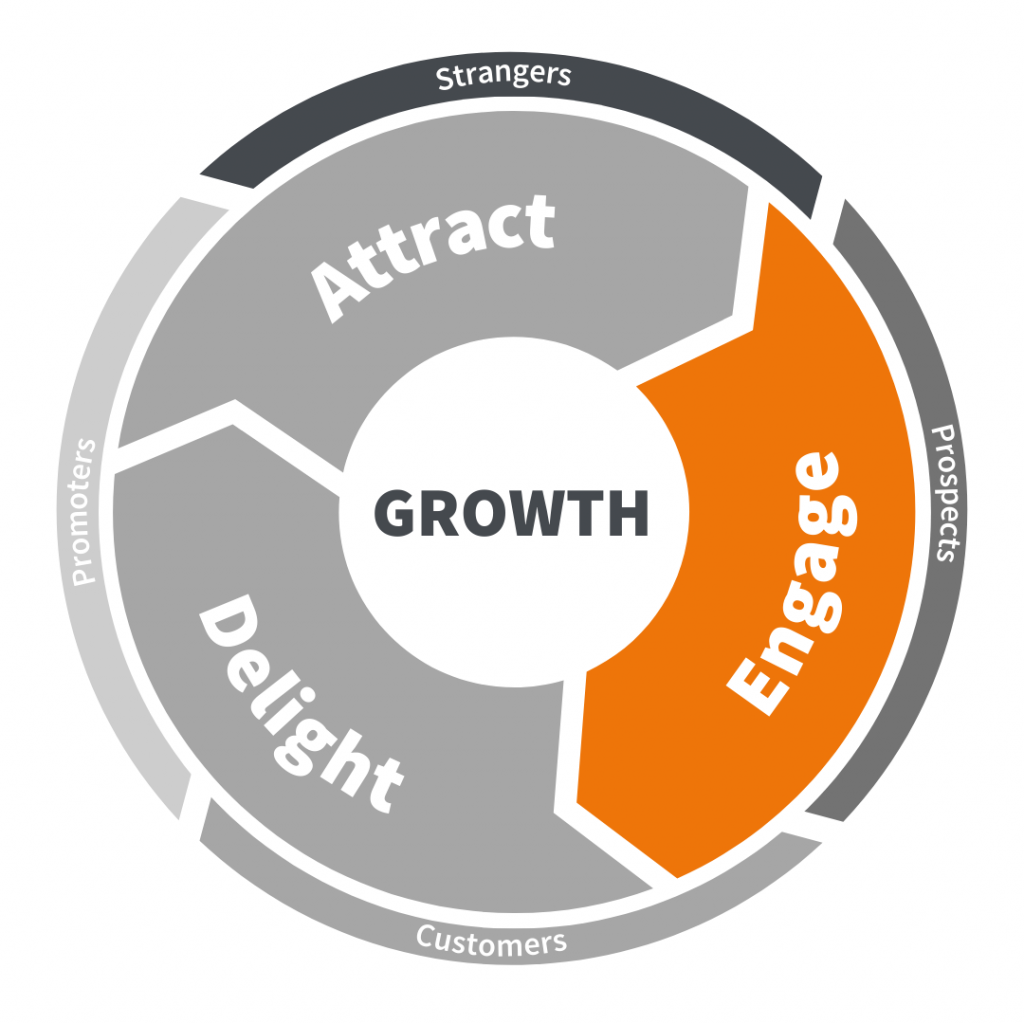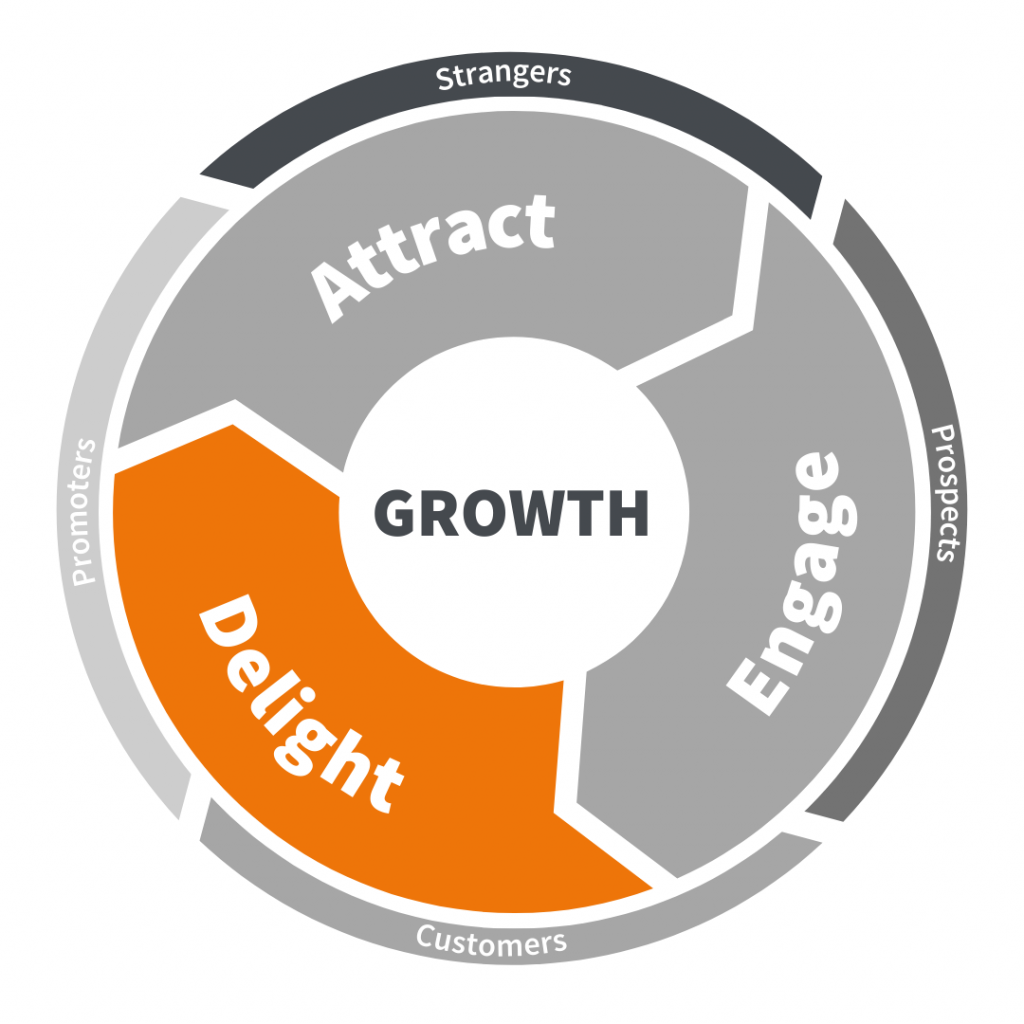Mel is our Partner Strategy & Delivery Manager and also a CIM Chartered Marketer, a testament to her commitment to excellence in the field. But Mel’s contributions don’t stop at the office door. Beyond her professional endeavours, she leads an active life as a qualified run leader and dedicated volunteer. Her experience in these roles has streamlined her leadership and teamwork skills, making her an invaluable asset when it comes to collaborating on projects and ensuring their success. Her sharp insights, strategic thinking, and knowledge have made her a backbone in our team’s ability to drive results for clients in this industry. Mel will make sure that we can approach marketing challenges from all angles and deliver outstanding results for our clients.
Posted on 05/05/2023 by Melanie Comerford
What is Inbound Marketing?
Are you tired of constantly bombarding potential customers with ads and cold calls, hoping to get their attention and convince them to buy your product or service? There’s a better way to attract leads and convert them into loyal customers: inbound marketing.
Inbound marketing is a customer-centric approach to marketing that aims to attract, engage, and delight potential customers by creating valuable content and experiences that align with their needs and interests. Instead of interrupting people’s daily lives with intrusive ads, inbound marketing seeks to earn their attention and trust by providing helpful information, solving their problems, and building relationships.
By focusing on providing value and building relationships, inbound marketing can help businesses create a loyal customer base that not only buys their products or services but also becomes their advocates and evangelists. In this blog post, we’ll explore the key benefits and principles of inbound marketing, and show you how you can grow your business and delight your customers.
What is Inbound Marketing?
Inbound marketing is a strategic marketing methodology that focuses on attracting, engaging, and delighting customers by providing valuable and relevant content that solves their problems and meets their needs. It’s a way to build trust and establish a relationship with potential customers by providing helpful information, resources, and solutions, rather than interrupting their day with unwanted or irrelevant ads.
The last few years have evolved the way we as consumers, communicate, research, buy, sell and educate ourselves online. Throughout this period, marketers have had to adapt the way they market their businesses, services and products to cater to these shifts in behaviour. One of these primary adaptations was the shift from traditional marketing to inbound marketing.
Inbound marketing has skyrocketed in popularity over the last handful of years and is now used by marketers across the world. Despite its spike in popularity, the methodology actually came to life in 2006. Since 2006 the critical principles of inbound remain largely the same but it has undergone various changes to work in harmony with the modern world, its technology and of course, consumer behaviour.

These changes were largely facilitated by the advancements in marketing technology. This technological movement brought with it CRM (customer relationship management) systems, marketing automation and various other marketing tools. The introduction of these tools has made inbound marketing more accessible, comprehensive and powerful. This approach to marketing is now more advanced and everyone wants in on the action, for good reason.
Fundamentally, the inbound marketing methodology is built upon relationships. Your company’s growth depends on building meaningful and lasting relationships, from prospects to delighted customers. Inbound aims to move away from the more traditional methods of outbound marketing like the purchasing of ads, email lists, cold calling and generally seeking out your leads. Instead, inbound aims to draw in your prospects by leveraging valuable content.
With inbound marketing, you can help your users identify and overcome their challenges to ultimately achieve their goals. By providing valuable and engaging content your business can establish itself as a thought leader within your sector. Why is this important? Because your prospects, leads and customers are much more likely to purchase from brands they trust.
Top Benefits of Implementing Inbound Marketing
This section of the blog will outline some of the key benefits of inbound marketing. Whether you’re a startup or a well-established business, inbound marketing provides a cost-effective, targeted, and measurable way to reach your target audience, build trust, and generate long-term results. So, without further ado, let’s dive into the key benefits of inbound marketing.
Cost-effective
Inbound marketing strategies are predominantly online focused, and the tactics are considerably cheaper to implement than the ‘old-school’ outbound methods like radio or TV advertising. A study conducted by HubSpot found that inbound marketing on average is 62% cheaper per lead than outbound marketing.
Hyper-Targeted
If you can produce content that is targeted to a desired audience or persona, the traffic that is generated is likely to be of better quality and much more qualified to make a purchasing decision. It’s worth noting that the more often you produce quality content the more frequently users are likely to visit your site.
Build trust and credibility
By providing valuable content, inbound marketing helps build trust and credibility with your target audience. This will ultimately become what will set you apart from your competitors and influence that all-important purchasing decision.
Increased website traffic
Inbound marketing tactics like SEO, social media marketing, and content marketing can drive targeted traffic to your website, increasing the opportunity for conversions. Due to its omnichannel approach, inbound marketing strategies present the opportunity to expand your reach further beyond what may not have been possible historically.
Measurable results
With inbound marketing, although there are arguably more variables and complexities involved, your inbound marketing strategy should provide you with one single line of truth. Making it easier to track, monitor and measure the success of your campaigns and make data-driven decisions.
Long-term impact
Unlike outbound marketing methods that offer short-term results throughout the duration of a campaign. Inbound marketing focuses on the longevity of your success, honing in on delivering long-term impact by building relationships with your visitors, leads and customers over time.
Marketing and sales alignment
Full cooperation and collaboration across your sales and marketing departments are needed to facilitate a successful inbound strategy. Sales provide valuable customer insights, which the marketing team uses to create targeted content that addresses their needs and challenges. This collaboration helps attract leads, increase conversions, and improve customer satisfaction.
What is the Marketing Flywheel?
If you’re already familiar with inbound marketing, the chances are, you’ll have heard the term ‘marketing flywheel’ being tossed around too. Invented by James Watt, the marketing flywheel is a model that demonstrates the momentum businesses can gain when their key services are aligned with one another. By aligning these services, your business can provide exceptional customer experiences which will ultimately be the key driver for your organisation’s growth.
The aim of the marketing flywheel is to get you to see your business from a unique perspective, not to redefine everything you already know. When you start to conceptualise your business as a flywheel you’ll become better informed to make decisions and adapt your strategy.

The Marketing Flywheel Explained
The marketing flywheel, the momentum it has and the energy it stores come down to three fundamental variables:
- How fast you spin it
- How much friction there is
- How big it is
Successful companies achieve growth by optimising their business strategies to address these three areas. To increase the speed of the flywheel, implement forces such as inbound marketing, freemium models, frictionless sales, customer referral programs, paid advertising and investing in customer service. By prioritising customer success, you increase the likelihood of positive word-of-mouth referrals.
To maximise the impact of your forces, eliminate friction from your business strategy. Friction includes bottlenecks in internal processes, lapses in team communication, and customer-employee misalignment. Streamline teams, address customer churn, and simplify the buyer’s journey to reduce friction. Consider factors such as team alignment, straightforward pricing, and flexible customer engagement methods to minimise obstacles and create a positive customer experience.
The more effectively you can increase the speed and reduce the amount of friction, the more promoters you’ll generate, feeding into the forces that spin your flywheel.
Inbound Marketing & The Flywheel
By this point, you may be thinking why are we dropping another methodology onto you, we promise that this is all relevant. The inbound marketing methodology should also be viewed as a cycle with your inbound strategy being the key ‘force’. When you use the flywheel to demonstrate inbound marketing, the sections are broken down into; attract, engage, and delight.
Attract:
In this phase, you’re looking to draw in prospects. These users are likely to be engaging with your business and brand for the first time and as you well know, first impressions are very important. They will likely have a problem or will be expressing symptoms of a problem; they’ll be searching for a diagnosis.

At this stage, you need to provide content that explains their problem in further detail, content that provides clarity and sympathises with the prospect. If you show your prospect that you understand and care about their challenges, you’ll begin to build trust with them. You want to earn a prospect’s interest, not force it.
Engage:
This is where you can begin to introduce solutions and insights to their problem. When describing these solutions, you can start to include references to your own products and services and discuss how they’ll bring further value to them.

When referring to the value of your brand or business don’t go overboard, you don’t want your readers, viewers, or listeners to feel like they’re being sold to. Instead, maintain a focus on solution selling rather than product selling, remember you want your prospects and leads to feel empowered.
Delight:
This is where your existing customers will sit. To delight a customer, you want to ensure your customers feel happy, satisfied and supported long after their initial purchase. Remember it’s far more expensive to attract a new customer than to retain an existing one.

By providing advice, expert knowledge and support to your customers when they reach out. Not all delight tactics involve manning a forum or inbox, you can set up intelligent chatbots, surveys, and email marketing to automate part of the process. Asking for feedback is also a great way to delight customers, feedback offers an opportunity for your customers to feel involved and connected with your brand.
By continually delighting your customers you’re more likely to turn them into brand advocates or promoters. These promoters could recommend your business to others or publish a review online, this may spark the interest of another prospect increasing the momentum for your flywheel.
Flywheel vs Funnel
Are we saying you should disregard all of your funnel models in support of the flywheel? Absolutely not, no. Your funnels can still serve a purpose for your business, marketing and sales strategies.
A marketing or sales funnel is a classic tool that represents the stages a customer goes through throughout their buying journey. The top of this funnel is wide and aims to bring awareness of your product or business to as many people as possible but some of these prospects may not be remotely interested in what you have to offer.
As the funnel narrows, leads pass through the different stages but only a small percentage make it as far as the bottom, taking that desired action. More recently, there’re questions raised about whether the funnel is an adequate representation of today’s consumer journey.
However, with that said, the traditional funnel model, although loved by many, is outdated and fails to consider the impact of customers on business growth. The flywheel model offers a more comprehensive and unified approach, considering how marketing, sales, support, and service all affect each other and drive company growth. By viewing customers as a driving force, not just an afterthought, the flywheel allows for a more holistic representation of the forces affecting growth.
Going forward, the flywheel provides a complete view of your business growth, identifying key opportunities. Funnels will still be used to measure the performance of specific processes within a company, but they are just a part of the larger picture represented by the flywheel.
Do you need Inbound Marketing?
In the past, outbound marketing techniques such as cold calling, TV ads, and direct mail were the go-to methods for businesses looking to reach a large audience and generate leads. However, with the rise of digital technologies and the increasing use of ad blockers, these outbound techniques are fast losing their effectiveness.
Consumers today are bombarded with ads from all sides, and they’ve become adept at tuning them out. They no longer want to be interrupted by irrelevant messages or pushy sales pitches. They want to be in control of their buying journey and seek out information on their own terms.
This is where inbound marketing comes in. By providing valuable content and experiences that align with the needs and interests of potential customers, inbound marketing can attract leads who are genuinely interested in what you have to offer. Instead of interrupting people with ads, inbound marketing seeks to build trust and relationships by helping people solve their problems and answer their questions.
Inbound marketing can compensate for the declining effectiveness of outbound techniques by providing a more personalised, relevant, and engaging experience for potential customers. It can help businesses cut through the noise and stand out in a crowded marketplace. By focusing on providing value and building relationships, inbound marketing can create a loyal customer base that not only buys your products or services but also becomes your advocates and evangelists.
So if you’re looking to stay ahead of the curve and drive sustainable growth for your business, it’s time to embrace the power of inbound marketing.
Inbound Marketing at Loop Digital
At Loop Digital, our team have adopted the latest inbound marketing practices to deliver the best results for all of our client partners. We understand the importance of achieving sustainable growth for your business, we leverage inbound tactics partnered with the flywheel model to generate exceptional experiences for our clients and their customers.
For more information, speak to one of our experts today or explore our inbound marketing packages. If you’d like to learn more about inbound marketing, we recommend downloading the Essential Inbound Marketing Guide down below.

Looking for your next opportunity?
Digital marketing careers
We’re always on the lookout for talented individuals to join our ever growing team. If you think you’d be a great match for Loop Digital, we’d love to hear from you.

Join 300+ business owners getting weekly growth strategies - subscribe now.
"*" indicates required fields







